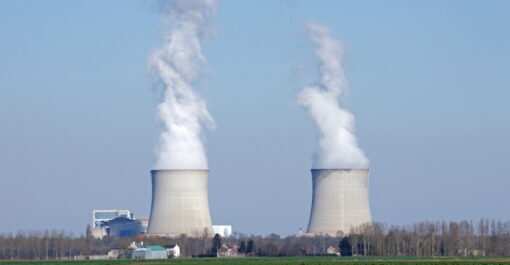Prosegue il recupero dei consumi elettrici e industriali: nel mese di aprile, Terna, la società che gestisce la rete elettrica di trasmissione nazionale, ha rilevato una domanda di energia elettrica in Italia pari a 24,3 miliardi di kWh, valore in notevole aumento (+21,7%) rispetto ad aprile del 2020, fortemente influenzato dal calo del fabbisogno dovuto alle iniziative messe in atto per contenere la pandemia da covid-19, e in crescita (+0,4%) anche rispetto ad aprile del 2019. Le fonti rinnovabili hanno coperto il 37% dei consumi. A livello industriale, l’indice IMCEI monitorato da Terna ha registrato una performance complessivamente positiva a livello sia tendenziale sia congiunturale, trainata da siderurgia, chimica, meccanica, materiali da costruzioni e metalli non ferrosi.
L’indice IMCEI elaborato da Terna – che prende in esame e monitora in maniera diretta i consumi industriali di circa 530 clienti cosiddetti energivori connessi alla rete di trasmissione elettrica nazionale (grandi industrie dei settori ‘cemento, calce e gesso’, ‘siderurgia’, ‘chimica’, ‘meccanica’, ‘mezzi di trasporto’, ‘alimentari’, ‘cartaria’, ‘ceramica e vetraria’, ‘metalli non ferrosi’) – conferma il ritorno sostanziale dei consumi industriali ai livelli pre-covid: l’indice risulta in crescita del 60% rispetto ad aprile 2020 e, soprattutto, del 6% rispetto ad aprile 2019. Si rileva, inoltre, una variazione congiunturale del +1% rispetto al mese precedente (marzo). In crescita i settori della siderurgia, chimica, meccanica, materiali da costruzioni e metalli non ferrosi. In flessione, invece, i comparti della cartaria, alimentari e mezzi di trasporto.
Anche per questo mese, considerati i valori anomali registrati a partire da marzo 2020, Terna ha ritenuto opportuno condurre un’analisi statistica supplementare prendendo come riferimento l’anno 2019. Nel primo quadrimestre del 2021, la domanda elettrica in Italia risulta in crescita del 6,2% rispetto all’omologo periodo dello scorso anno (+7,2% in termini rettificati) e in flessione dell’1,5% rispetto al 2019 (in termini rettificati è pari a -1,4%).
Analizzando nel dettaglio i dati di aprile, quest’anno il mese ha avuto lo stesso numero di giorni lavorativi (21) e una temperatura media mensile inferiore di circa 1,5°C rispetto ad aprile del 2020. Il dato destagionalizzato e corretto dagli effetti di calendario e temperatura diventa pertanto +20,3%. A livello territoriale la variazione tendenziale di aprile è stata ovunque positiva: +25,8% al Nord, +20,2% al Centro e +14,6% al Sud. In termini congiunturali, il valore destagionalizzato e corretto dagli effetti di calendario e temperatura ha fatto registrare una sostanziale stabilità rispetto al mese precedente (marzo).
Nel mese di aprile, la domanda di energia elettrica è stata soddisfatta per circa l’88% con produzione nazionale e per la quota restante (12%) dal saldo dell’energia scambiata con l’estero. In dettaglio, la produzione nazionale netta (21,7 miliardi di kWh) ha registrato un incremento dell’11,5% rispetto ad aprile 2020. In aumento le fonti termoelettrica (+23,6%) ed eolica (+25,6%). In flessione le fonti idrica (-12,5%), fotovoltaica (-11%) e geotermica (-3,8%). Per quanto riguarda il saldo import-export, la variazione è pari a +253,6% per un effetto combinato dell’aumento dell’import (+77,3%) e di una riduzione dell’export (-68,5%).
L’analisi dettagliata della domanda elettrica mensile provvisoria del 2021 è disponibile nella pubblicazione “Rapporto Mensile sul Sistema Elettrico”, consultabile alla voce “Sistema elettrico >> Dispacciamento >> Dati esercizio” del sito www.terna.it.
I dati in tempo reale sull’esercizio del sistema elettrico nazionale sono inoltre consultabili sull’app di Terna disponibile sui principali store:
https://play.google.com/store/apps/details?id=it.terna.energia&hl=it
https://apps.apple.com/it/app/terna/id1458535498
Monthly demand at 24.3 billion kWh: +0.4% compared to 2019 and +21,7% compared to 2020; Terna: decisive recovery of industrial consumption in April; the IMCEI index up by 6% compared to 2019 and by 60% compared to 2020: steel, chemical, mechanical, construction materials and non-ferrous metal sectors all positive, renewables covered 37% of demand – Rome, 21 May 2021. The recovery of electricity and industrial consumption continues: in April, Terna, the company which manages the national transmission grid, saw 24.3 billion kWh of electricity demand in Italy, a notable increase (+21.7%) with respect to April 2020, heavily influenced by the decrease in requirements associated with the initiatives implemented to contain the Covid-19 pandemic, while also showing growth (+0.4%) with respect to April 2019.
Renewable sources covered 37% of consumption. At the industrial level, the IMCEI index monitored by Terna showed overall positive performance both in terms of trends and comparative figures, driven by steel, chemicals, mechanical, construction materials and non-ferrous metals.
Terna’s IMCEI index – which directly examines and monitors the industrial consumption of about 530 large energy consumers connected to the Italian national transmission grid (large industries in the following sectors: cement, lime and gypsum, steel, chemical, engineering, transportation, food, paper, ceramics and glass and non-ferrous metals) – confirms the substantial return of industrial consumption to pre-Covid levels: the index is in fact up 60% compared to April 2020 and up 6% compared to April 2019. There was also an increase of +1% compared to the previous month (March). The steel, chemicals, mechanical, construction materials and non-ferrous metal sectors saw growth. On the other hand, the paper, food and transportation sectors saw a decrease.
Again for this month, due to the anomalous values recorded from March 2020 onwards, Terna deemed it appropriate to conduct an additional statistical analysis using 2019 as a benchmark. During the first four months of 2021, electricity demand in Italy grew by 6.2% with respect to the same period the previous year (+7.2% adjusted), while it fell by 1.5% with respect to 2019 (-1.4% adjusted).
Analysing the April data in detail, this year the month had the same number of working days (21) and an average monthly temperature 1.5°C lower than April 2020. When adjusted for seasonal, temperature and calendar effects, the figure represents a +20.3% variation. When looking regionally, the April trend was positive across the country: +25.8% in the North, +20.2% in Central Italy and +14.6% in the South. In comparative terms, the data, adjusted for seasonal, calendar and temperature effects, was substantially in line with the previous month (March).
In April, electricity demand was met for approximately 88% through domestic production and the remainder (12%) through the balance of electricity exchanged with foreign countries. More in detail, net domestic production (21.7 billion kWh) increased by 11.5% compared to April 2020. Increases were seen in hydroelectric (+23.6%) and wind power (+25.6%) sources. There was decrease in wind (-12.5%), photovoltaic (-11%) and geothermal (-3.8%) sources. Relative to the import/export balance, the change amounted to +253.6% due to the combined effect of an increase in imports (+77.3%) and a decrease in exports (-68.5%).
A detailed analysis of provisional 2021 monthly electricity demand is available in the publication “Monthly Report on the Electricity System”, under the section “Electric System >> Dispatching >> Operating Data” at www.terna.it.
Real-time data on the operation of the national electricity system can also be found on the Terna app, available on all app stores:
https://play.google.com/store/apps/details?id=it.terna.energia&hl=it
https://apps.apple.com/it/app/terna/id1458535498








